
|
Introduction Plasma is generated using high-voltage electrical discharge. In the plasma, electron-impact reactions produce reactive species including radicals (O, N, OH), ions (N2+, O2-), and excited species (N2(v), N2(A), O2(a), O(D)). As a result, plasma has high chemical reactivity. There are various applications employing the high reactivity of plasma. 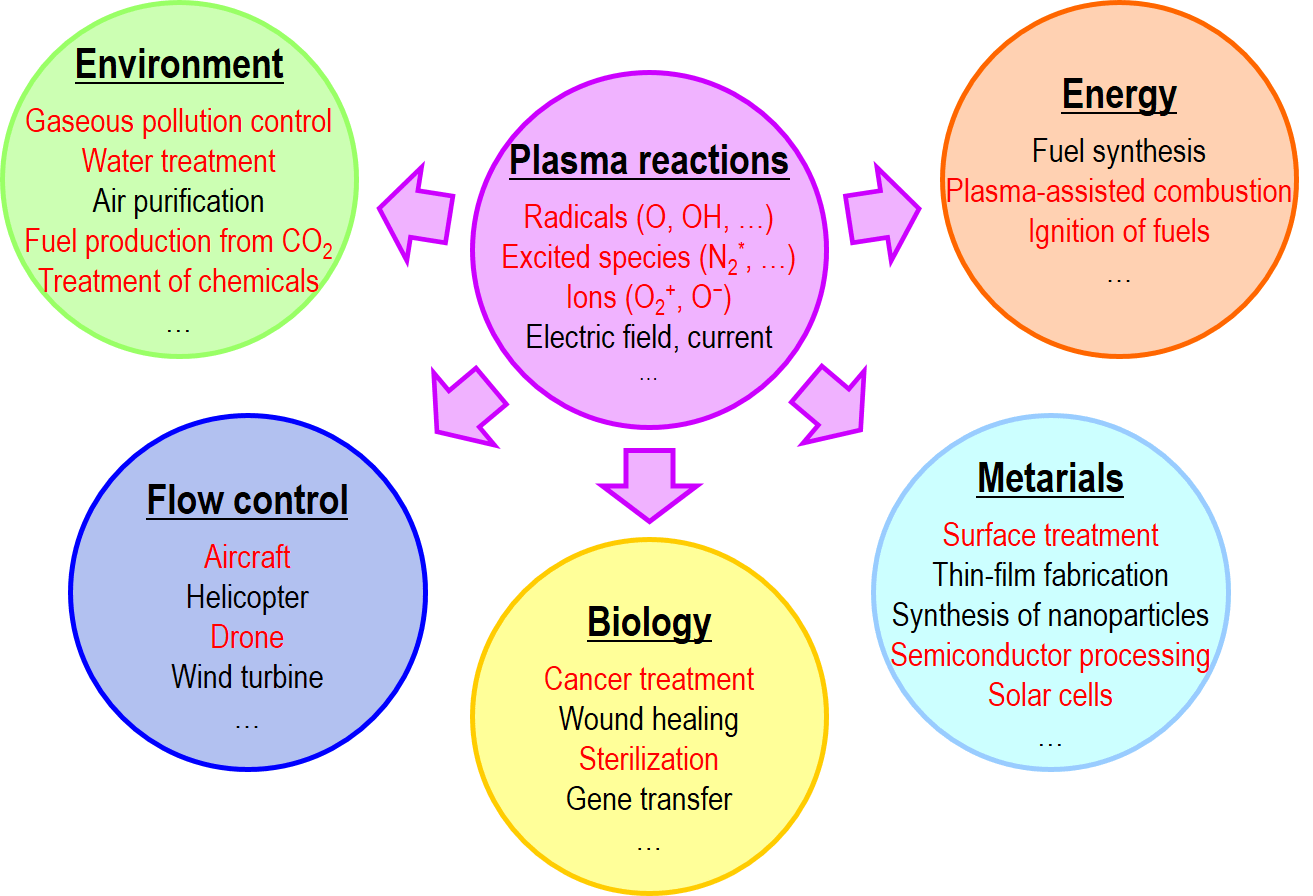 We are working on fundamental and application research on atomspheric-pressure plasma. Our current, past, and planned researches are indicated in red in the upper figure. 1. Measurement and simulation of plasma Reactive species are very important in the plasma chemical processes. We measure the reactive species using laser spectroscopy to study the reaction processes in the plasma. The table shown below lists the reactive species we have measured. The lifetimes of reactive species are very short (1 us to 1 ms), so we need in-situ measurements. We also develop a simulation model of streamer discharge including the reactions of reactive species. Refer to the review paper for more information about our measurements of reactive species and simulations. 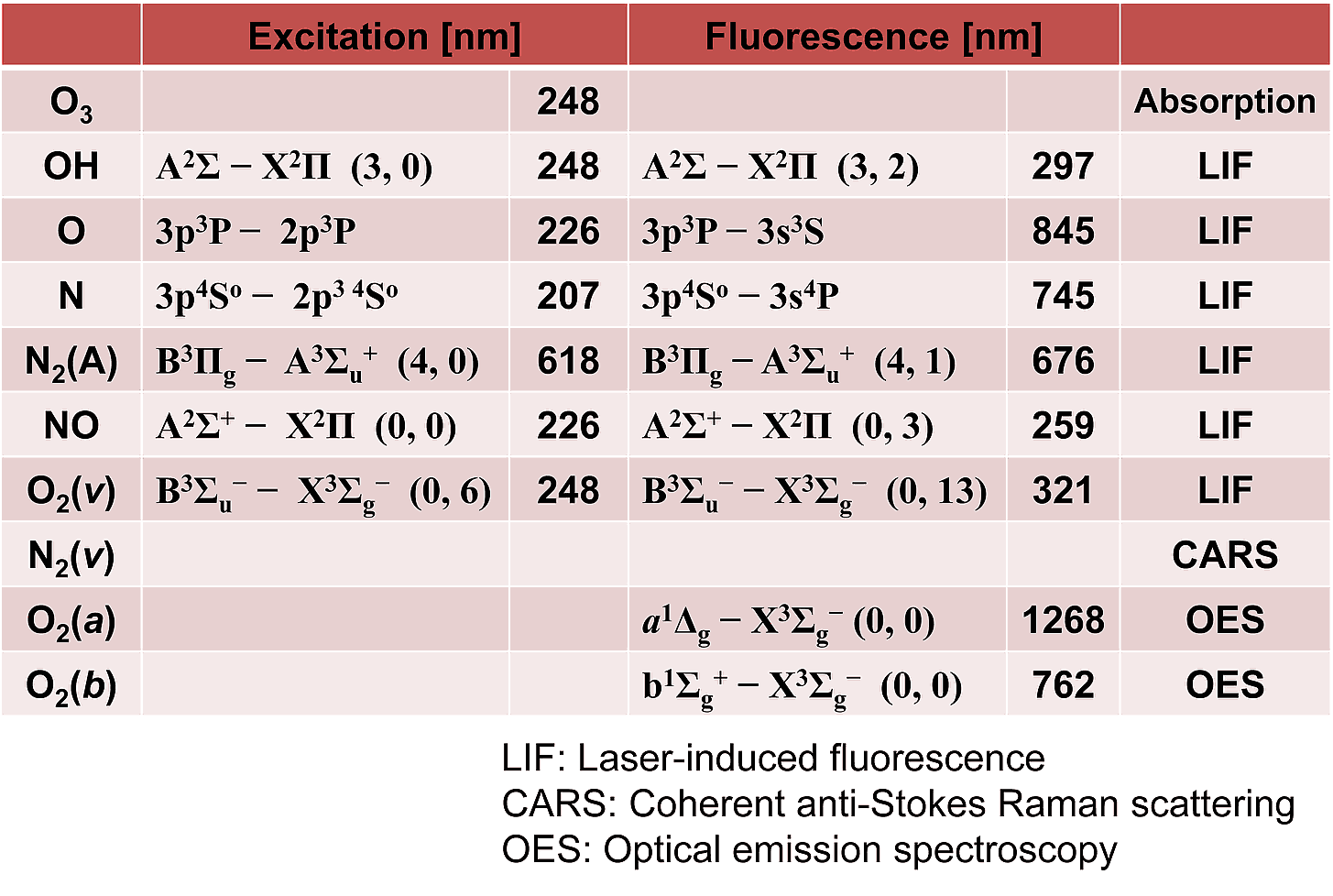
1.1 Streamer discharge Streamer discharge is a typical atmospheric-pressure plasma, which is used for environmental pollution control, water treatment, plasma medicine, plasma assisted ignition and combustion, and surface treatment of materials. We measure various types of reactive species in the streamer discharge using laser spectroscopy and develop a simulation model of the streamer discharge. In addition, we collaborate on measuring the density and energy distribution of electrons and electric field in the streamer discharge using laser spectroscopy. The results are used for validation of our simulation. We aim at achieving a comprehensive understanding of streamer discharge. 
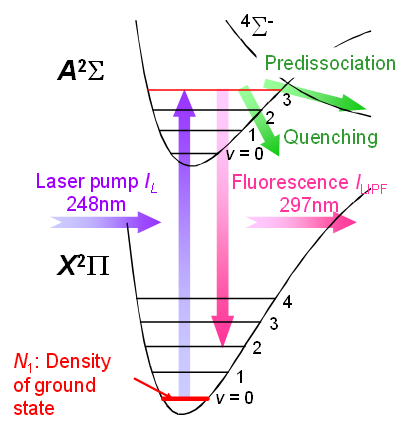
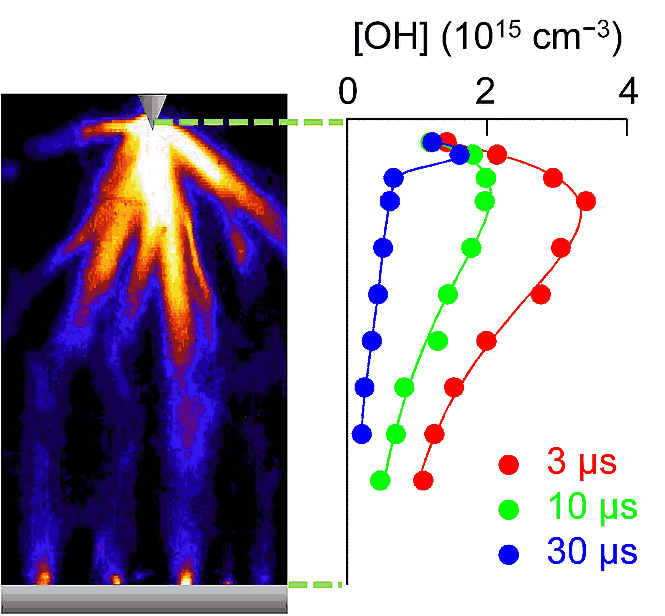 (Left) Laser equipment. (Center) Principle of laser-induced fluorescence. (Right) OH density measurement in the postdischarge period of streamer discharge using laser-induced fluorescence. 
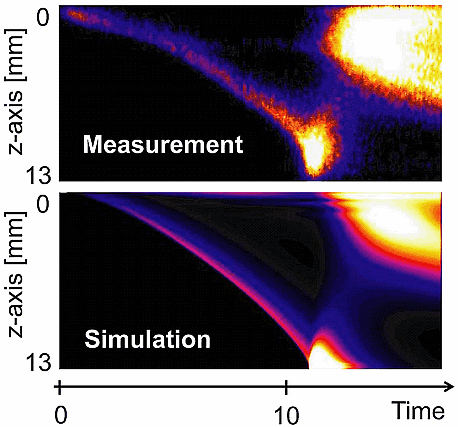
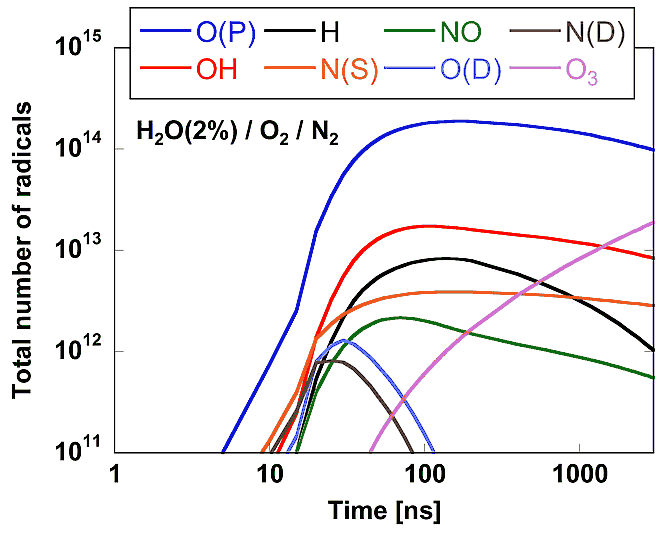 Simulations of streamer discharge. (Left) Electric field and electron density. (Center) Streak images. (Right) Time evolution of reactive species densities after streamer discharge pulse. 1.2 Helium atmospheric-pressure plasma jet Helium atmospheric-pressure plasma jet is used for surface treatments of materials, material synthesis, and plasma medicine. The fundamental research of the plasma jet is very important. We measure the reactive species in the plasma jet using laser spectroscopy. We also develop a reaction model of the reactive species, which can reproduce the measurement results. 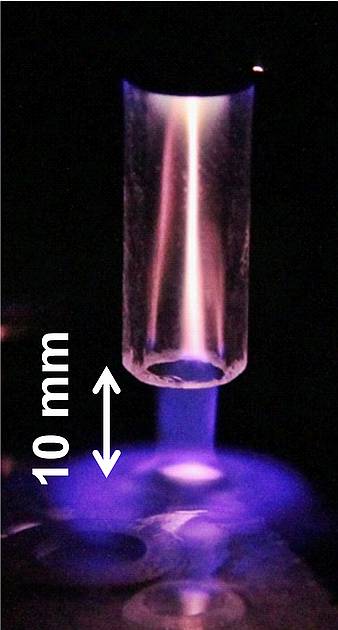
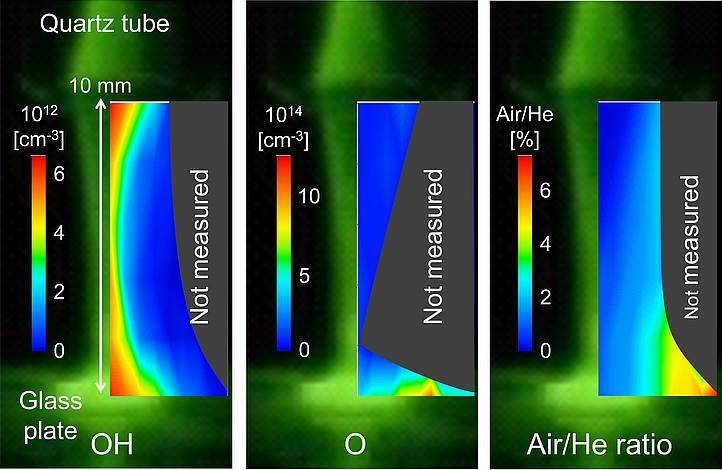
Measurements of OH and O densities and air-helium mixture ratio using laser-induced fluorescence when a helium plasma jet is irradiated onto a glass surface. 2. Plasma medicine
2.1 Cancer treatment We demonstrated the possibility of using plasma for immunotherapy of cancer using mice. When we treated one of two tumors using plasma, as shown in the left figure below, the other tumor also showed antitumor effect. We also showed that the antitumor immunity may be enhanced in the mice. This effect is already known for radiotherapy, but a similar effect may also appear in the plasma treatment. We study the plasma-induced cancer-specific immune response. In addition, we measure the densities of reactive species in the plasma which we use for treating cancer cells to examine the therapeutic effects of those reactive species on cancer treatment. We have shown that plasma-induced antitumor immunity may also be effective in suppressing local recurrence after surgical resection of tumors. We are also conducting combination with immune checkpoint inhibitors, which are used in cancer immunotherapy, to obtain synergistic effects. We have also observed that plasma treatment of normal tissue, which is not a tumor, has an antitumor effect on tumors distant from the irradiated area. We also measure the reactive species in the plasma and analyze immune cells in tumors. 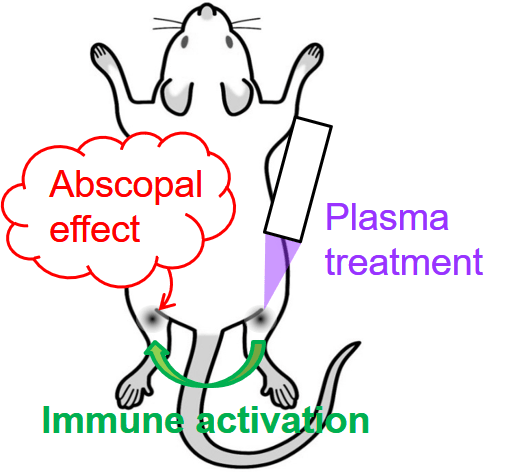
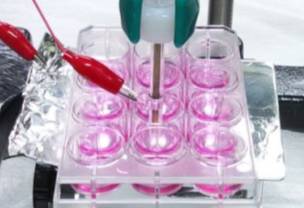
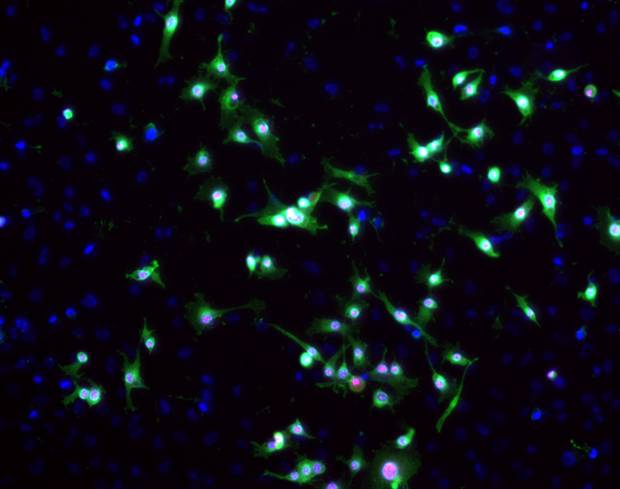 (Left) Cancer-specific immune activation using plasma. (Center) Experiment using cells. (Right) Staining of plasma-treated cells. 3. Surface treatment using plasma Plasma is widely used for surface treatments of materials and living tissues (= plasma medicine). Reactive species react on the surfaces to modify the surface chemical composition and/or to stimulate the living tissues. We work on particularly fundamental researches of the surface treatment using plasma. 3.1 Selective production of a specific type of reactive species
3.2 Quantitative measurement of surface treatment effects by various radicals and modeling of the surface reactions
4. Past researches Some of our previous researches on plasma applications are introduced. Our fundamental researches including laser spectroscopy and simulation are also related to these plasma applications. 4.1 Water treatment When we generate plasma in water or on its surface, a large amount of OH radicals are produced via dissociation of H2O molecules. We had studied water treatment using plasma which utilizes the high reactivity of OH radicals.  Treatment of dye-polluted water using plasma. 4.2 Removal of gaseous environmental pollutants We had studied decomposition of gaseous environmental pollutants including combustion exhaust gases and volatile organic compounds (e.g. benzene, trichloroethylene, and toluene) using plasma. Our measurements of reactive species and simulation are largely related to this pollution control technologies. We are doing these measurements and simulation while considering their relation with the environmental technologies.  Decomposition of environmental gaseous pollutants using dielectric barrier discharge. 4.3 Plasma assisted ignition and combustion Plasma can improve combustion efficiency and reduce its pollutant emissions by supplying reactive species and heat. We had developed a plasma-assisted combustion technology which can reduce the pollutant emissions by stabilizing lean combustion using plasma. In addition, plasma can ignite a fuel-air mixture like the spark-ignition in an automobile engine. We had also examined the ignition of hydrogen using plasma. This research was also related to the safety of electrostatic hazard of hydrogen handling. 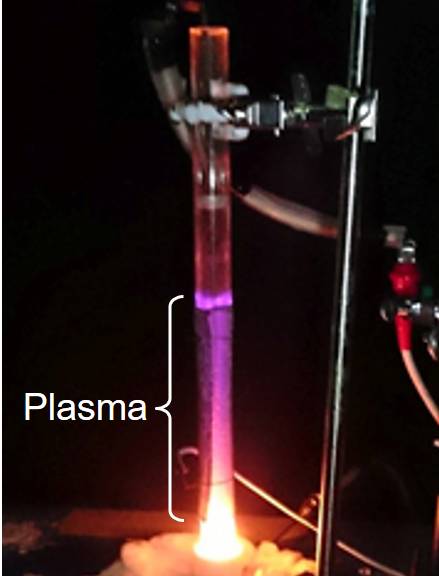
 
(Upper left) Plasma assisted combustion. 4.4 Treatment of dye-sensitized solar cells using reactive species Dye-sensitized solar cell (DSSC) has a TiO2 nanoporous photoelectrode colored with dye. We had improved the energy conversion efficiency of DSSC by chemical modification of the TiO2 nanoporous photoelectrode with reactive species produced by plasma and UV light. The treatment with reactive species also lowers the annealing temperature for fabricating the photoelectrode from 450 C to approximately 100 C. It enables us to use low-cost and light-weight plastic substrates instead of the conventional expensive heat-resistant glass substrates. 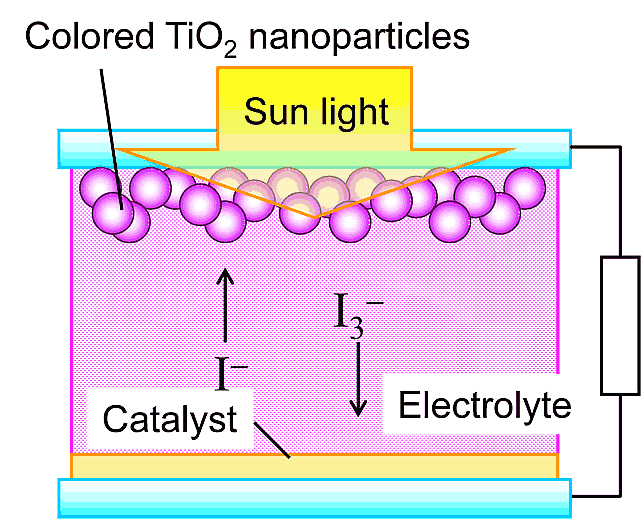
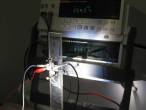
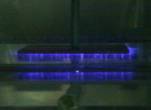 (Left and center) Dye-sensitized solar cell. (Right) plasma treatment. 4.5 Sterilization
4.7 Flow control using plasma
4.8 Decomposition of CO2 under Mars environment
Latest update: Apr 01, 2025
|
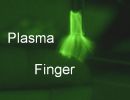 Plasma is efficacious for cancer treatment, blood coagulation, wound healing,
tissue regeneration, etc.
It is believed that reactive species are effective for the medical treatment.
However, the treatment mechanism is not well understood.
We study the cancer treatment and wound healing (sterilization)
as well as elucidate these treatment mechanisms.
Plasma is efficacious for cancer treatment, blood coagulation, wound healing,
tissue regeneration, etc.
It is believed that reactive species are effective for the medical treatment.
However, the treatment mechanism is not well understood.
We study the cancer treatment and wound healing (sterilization)
as well as elucidate these treatment mechanisms.
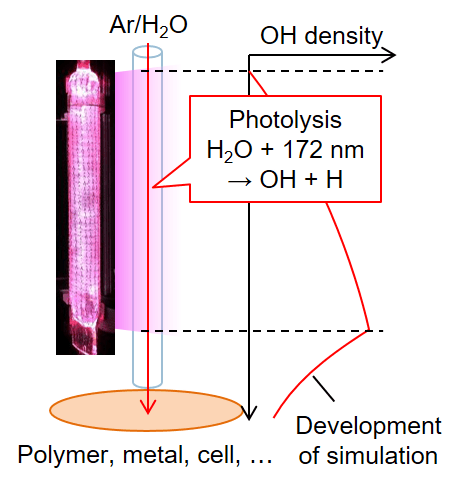 For the surface treatment using plasma, quantitative measurements of the effect of each type of reactive species (OH, O, etc.) on the treatments is important.
However, it is difficult to isolate the treatment effect of a specific type of reactive species because the plasma supplies tens to a hundred types of reactive species simultaneously.
To measure the treatment effect of a specific type of reactive species,
we have developed a method to selectively produce a specific type of reactive species and supply them to the surface of materials and cells.
We use vacuum ultraviolet photolysis of molecules to produce the reactive species.
We also develop a simulation model, which can reproduce the measurement results.
For the surface treatment using plasma, quantitative measurements of the effect of each type of reactive species (OH, O, etc.) on the treatments is important.
However, it is difficult to isolate the treatment effect of a specific type of reactive species because the plasma supplies tens to a hundred types of reactive species simultaneously.
To measure the treatment effect of a specific type of reactive species,
we have developed a method to selectively produce a specific type of reactive species and supply them to the surface of materials and cells.
We use vacuum ultraviolet photolysis of molecules to produce the reactive species.
We also develop a simulation model, which can reproduce the measurement results.
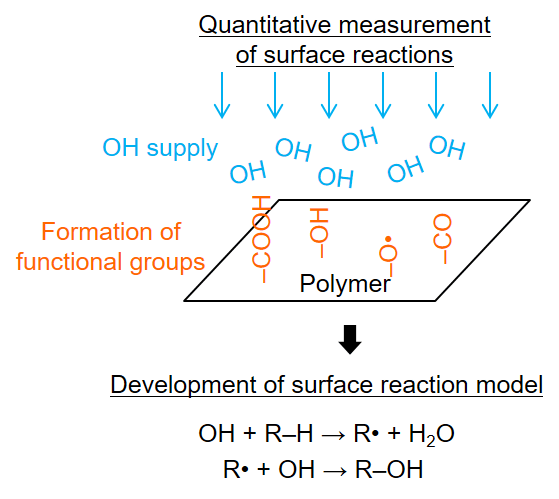 Radicals such as OH and O are considered to be important in surface treatment,
but there have been no studies to quantitatively measure their effects of surface treatment.
We produce radicals selectively such as OH and O using the vacuum ultraviolet method and supply them on the surfaces to quantitatively measure the effects of surface treatment.
We combine these measurements with surface analyses such as ATR FTIR and XPS,
quantum chemical calculations, and molecular dynamics simulations
to develop a surface reaction model.
Radicals such as OH and O are considered to be important in surface treatment,
but there have been no studies to quantitatively measure their effects of surface treatment.
We produce radicals selectively such as OH and O using the vacuum ultraviolet method and supply them on the surfaces to quantitatively measure the effects of surface treatment.
We combine these measurements with surface analyses such as ATR FTIR and XPS,
quantum chemical calculations, and molecular dynamics simulations
to develop a surface reaction model.
 There are two important effects for wound healing using plasma: (i) regeneration of wounded cells using plasma and (ii) sterilization using plasma.
We focus on the plasma sterilization, and
examine the sterilization effects of various reactive species.
There are two important effects for wound healing using plasma: (i) regeneration of wounded cells using plasma and (ii) sterilization using plasma.
We focus on the plasma sterilization, and
examine the sterilization effects of various reactive species.
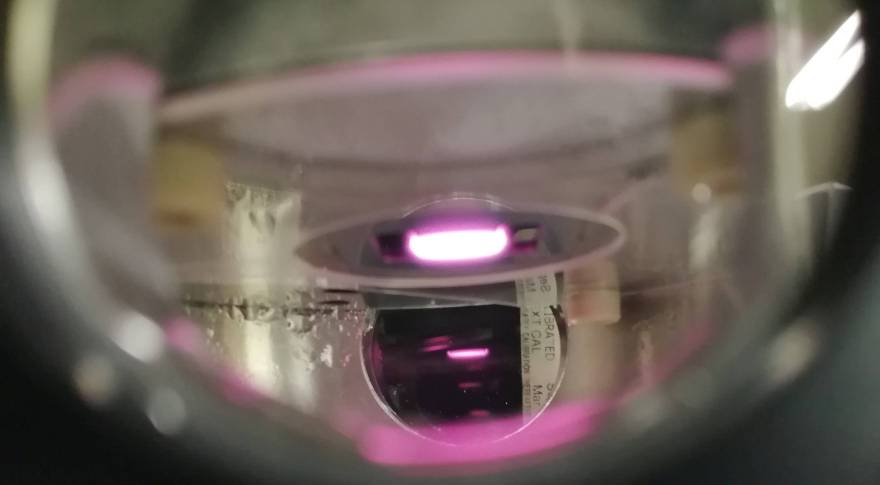 Ashing process is to remove photoresist from substrates using plasma.
A microwave water vapor plasma is developed as a new method for the ashing process.
We measure the density of OH radicals, which are considered to be the most important reactive species in the microwave water vapor plasma, using laser spectroscopy.
We also develop a reaction model which can reproduce the behavior of the measured OH density.
Ashing process is to remove photoresist from substrates using plasma.
A microwave water vapor plasma is developed as a new method for the ashing process.
We measure the density of OH radicals, which are considered to be the most important reactive species in the microwave water vapor plasma, using laser spectroscopy.
We also develop a reaction model which can reproduce the behavior of the measured OH density.
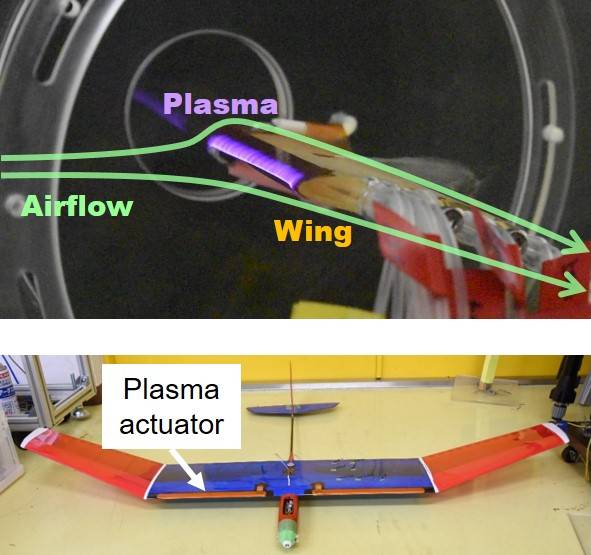 Aircraft wings are equipped with flow control devices to suppress flow separation.
We explored the use of aerodynamic phenomena generated by plasma to achieve such flow control.
The technology has the potential to significantly improve the controllability of small aircraft and drones,
such as multicopters.
[Research theme of Dr. Atsushi Komuro
(currently at the National Institute of Advanced Industrial Science and Technology]
Aircraft wings are equipped with flow control devices to suppress flow separation.
We explored the use of aerodynamic phenomena generated by plasma to achieve such flow control.
The technology has the potential to significantly improve the controllability of small aircraft and drones,
such as multicopters.
[Research theme of Dr. Atsushi Komuro
(currently at the National Institute of Advanced Industrial Science and Technology]
 We conducted research on oxygen and hydrocarbon fuel production under Martian atmospheric conditions,
with a view toward future Mars exploration.
This technology efficiently decomposes CO2 in the Martian atmosphere using plasma, producing O2 and CO.
[Research theme of Dr. Atsushi Komuro
(currently at the National Institute of Advanced Industrial Science and Technology]
We conducted research on oxygen and hydrocarbon fuel production under Martian atmospheric conditions,
with a view toward future Mars exploration.
This technology efficiently decomposes CO2 in the Martian atmosphere using plasma, producing O2 and CO.
[Research theme of Dr. Atsushi Komuro
(currently at the National Institute of Advanced Industrial Science and Technology]